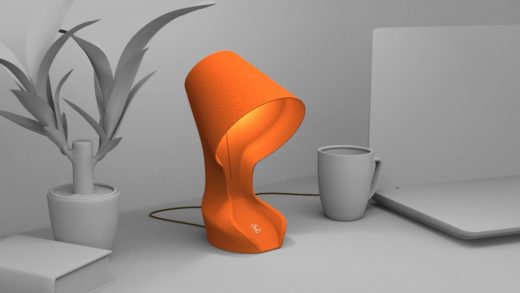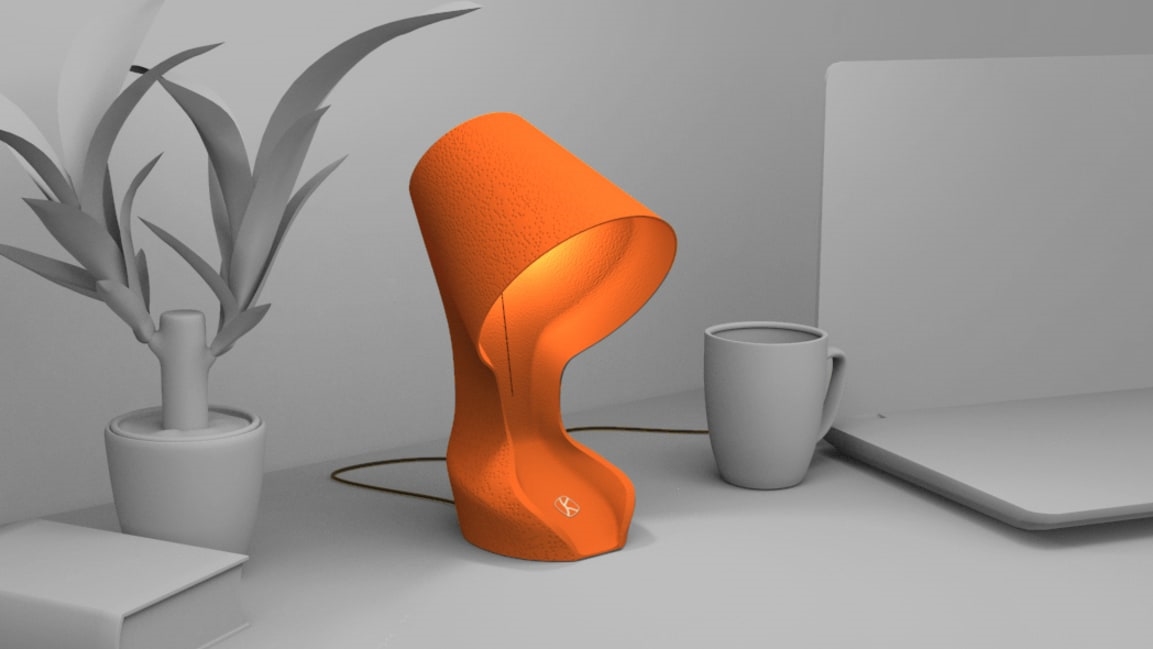What if our home electronics were made from fruit, not plastic?
If you glance around your home, you’ll see plastic everywhere, from your air-conditioner to your phone charger to your lamp. When you’re done with these products, they’ll likely end up in a landfill where they’ll sit for hundreds of years, breaking into minuscule particles that make their way into rain and food.
A trio of designers in Milan wants to make our home products out of more sustainable materials. They’ve just launched an $85 lamp called the Ohmie that’s made from discarded orange peels and can be thrown into the compost bin at the end of its life, where it will decompose along with other food waste. It’s a beautiful product and one that points to a future where designers stop relying so heavily on plastic.
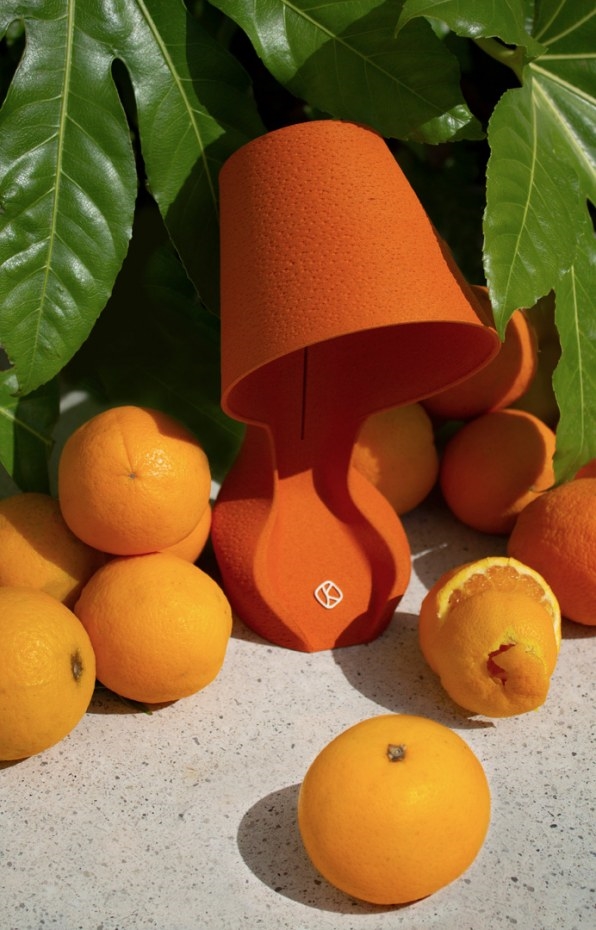
The Ohmie lamp comes from a studio in Milan called Krill Design, whose design team consists of Sofia Duarte, Victoria Rodriguez Schon, and Yack Di Maio. Krill launched in 2018 with the goal of developing new materials from waste and creating more eco-friendly products. Until now, the studio has designed products for other companies, including trays, lamps, and bowls made from orange peels for San Pellegrino and furniture made from coffee grounds for a competition hosted by the Municipality of Milan.
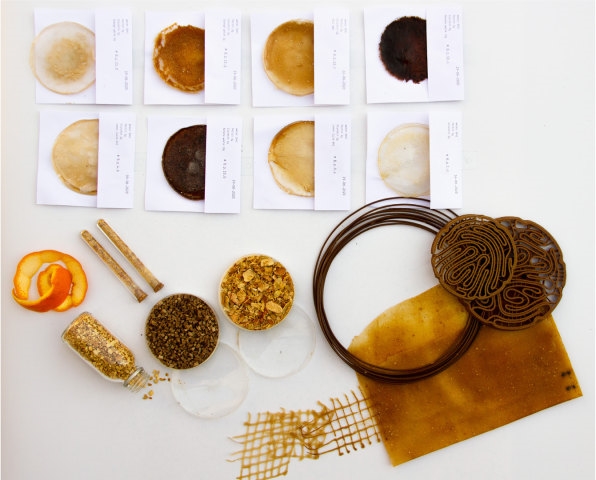
But this year, Krill wanted to launch a product that it could sell directly to consumers. It created the Ohmie from a similar material as it used for the San Pellegrino project. “As our first product, we wanted to highlight our Italian identity,” says Duarte. “Italy is famous for its oranges. Sicily is a big exporter of oranges.”
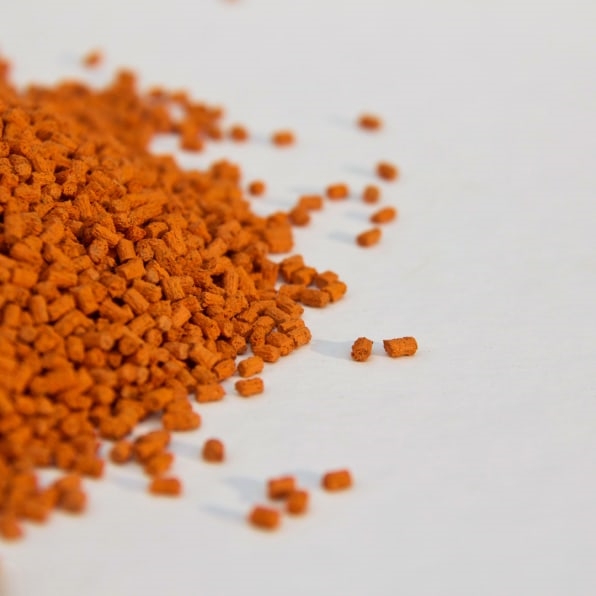
Krill partnered with a family-owned business in Sicily to collect discarded orange peels. They then dried the peels, ground them up, and blended them with a natural biopolymer. This material was extruded through a 3D printer to create the distinctive shape of the lamp. The addition of the biopolymer means that the lamp won’t biodegrade with normal use. “We wanted the lamp to be long-lasting, and not break down when exposed to water,” says Duarte. That said, it will quickly break down in industrial composting facilities, which are common in Europe. “You can just put it in the compost bin along with the rest of your food waste and it will be picked up by the city,” says Schon. (The lamp comes with a USB-connected power cord, a dimmer switch, and an LED bulb, which can be removed before composting.)
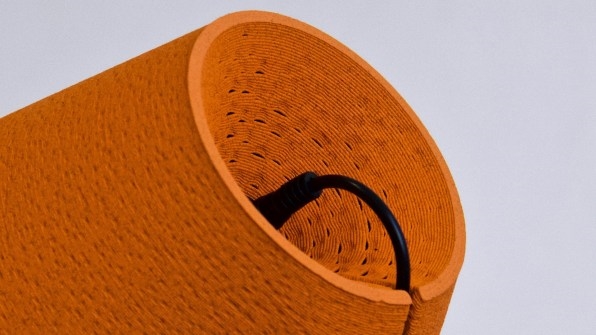
Duarte says she wanted the lamp to look, feel, and even smell like oranges, so users would remember that it’s made from organic materials. They deliberately 3D printed the lamp with a dimpled texture, akin to an orange peel. The material still contains the scent of oranges; the lamp smells a little like orange cookies. “Unlike the shiny look of plastic, we wanted the customer to remember this comes from food waste,” she says. “We wanted to transform food waste into a beautiful thing.”
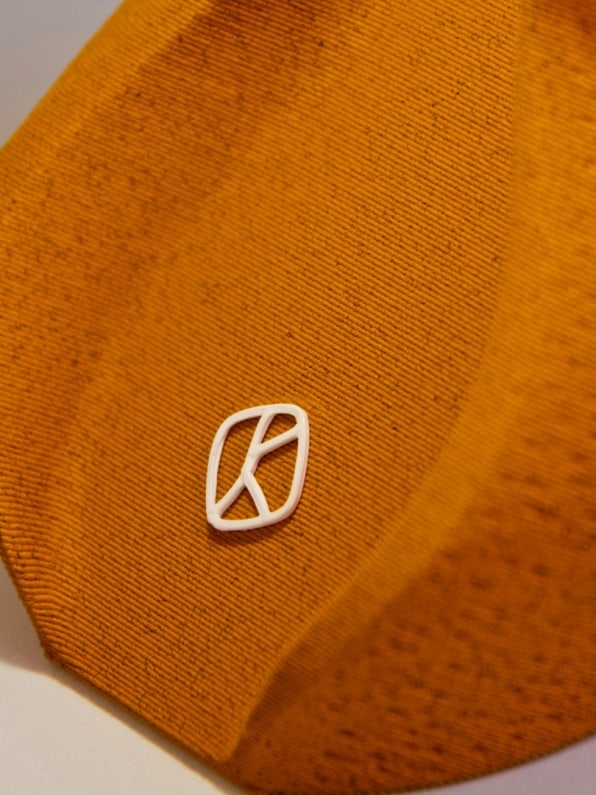
The Ohmie lamp is the first of many products in Krill’s pipeline. The team plans to use this orange peel material for other objects, while experimenting with different materials from waste. But Krill is also interested in sending a message to the broader design community about the importance of investing in new, sustainable materials, instead of relying on plastic. Many iconic pieces of furniture from the past 50 years, such as Philipe Starck’s ghost chair and Kartell’s modernist storage units, were made entirely out of plastic. Back then, the material seemed miraculous, capable of morphing into almost anything a designer could imagine. But given what we know now about plastic pollution, Duarte believes designers need to pour their creative energy into new materials. “We believe the new generation of designers can’t just design objects, we also have to design the materials,” says Duarte.
(21)

